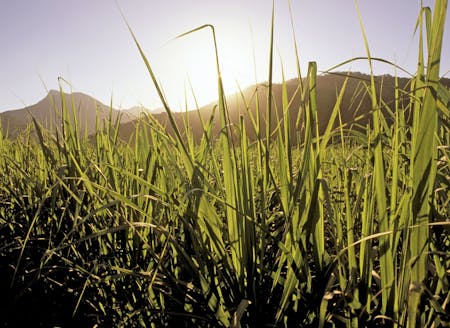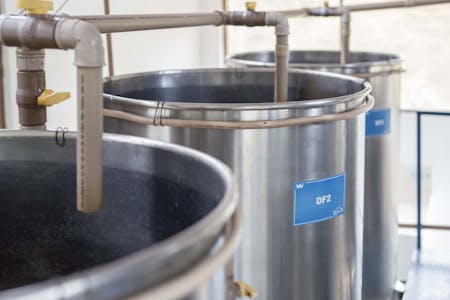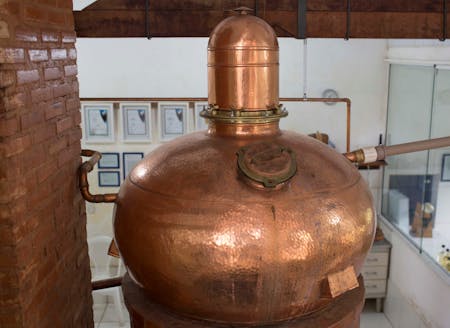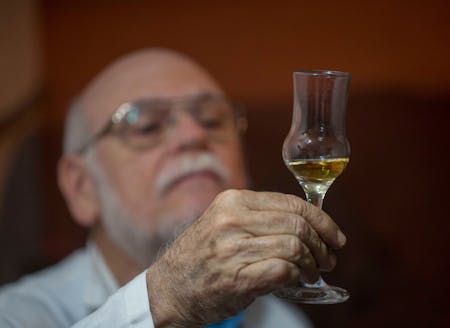TIJUCA spirits could not exist without the know-how of Brazilian mestres cachaceiros and their French counterparts.
In the beginning is the sugar cane...

The question has always been asked whether there is an ideal variety of sugar cane for the production of rum.
The debate remains open but TIJUCA considers that the choice of sugar cane remains important in order to meet the quality requirements of the brand, and in particular, to guarantee the desired characteristics in relation to maturation and sugar content.
TIJUCA directs its producers towards sugar cane from organic farming, using farming techniques that respect the environment and are compatible with sustainable development.

The harvest: "a safra de cana"
It takes between 12 and 18 months for the sugar canes to reach full maturity. When their stem becomes hard and waxy, the amount of sugar contained in the plant is optimal. About a month after flowering, cutting can begin.
The harvest period is from September to December in Brazil. Our producers harvest, by hand, a healthy cane, just by cutting the stems and do not use the technique of burning.
Arrived at the mill, the cane is crushed a maximum of 12 hours after harvesting so as not to start fermentation and not to lose sucrose.

Fermentation: the "pé de cuba"
The cane juice, after decantation and filtration, is then left to ferment for 24 hours in stainless steel tanks located in a ventilated room and maintained at room temperature.
In the production of artisanal cachaça, the fermentation process must be completely natural. Fermentation is the partial oxidation of the glucose present in the cane juice, by the sole action of yeasts and without the use of chemical additives. This is how Pé de Cuba is created, a dense liquid made up of yeast and sugar cane juice.

Distillation: "o coração"
When this operation is finished, the vat contains an alcoholic wine of 7° to 12°, ready for distillation.
At TIJUCA, the process consists of boiling the wine inside a copper still, producing vapors which are condensed by cooling to give a large quantity of alcohol.
On leaving the still, the distillate is separated into the “cabeça”, the “coração” and the “cauda”; in English: the head, the heart and the tail. Only the purest part of the distillate, "o coração", is used.
TIJUCA producers only need one distillation pass to obtain a quality distillate.
Aging: special identity and "the angels' share"

After an initial maturation in stainless steel vats, the distillate is then stored for at least eighteen months in wooden barrels endemic to Mata Atlântica. The bouquet of the spirit then benefits from the fruit of complex chemical reactions between the distillate and the various components of the wood as well as exchanges with its environment (air and humidity).
The tropical climate that saw the birth of TIJUCA cachaças accentuates these exchanges even more. The distillate will partly evaporate during the process: “the angels’ share”. This phase of production, also called “aging”, is essential to achieve the very particular identity of TIJUCA spirits, whose aromatic palettes reflect the diversity of the essences of the Brazilian forest.
Blending and finish
Finally, the distillates from our Brazilian producers are blended with all the know-how of the Brazilian mestres alambiqueiros or cellar masters from the Cognac region, but always according to original recipes specific to TIJUCA. The cachaças are then left to rest in stainless steel vats while our BBR rum benefits from a finish in oak barrels having previously been used for the aging of white Port. Beyond the symbolic reminiscence of the Portuguese empire of Brazil, this additional refining thus adds to the complexity of the aromatic notes which make the specificity of TIJUCA rum.